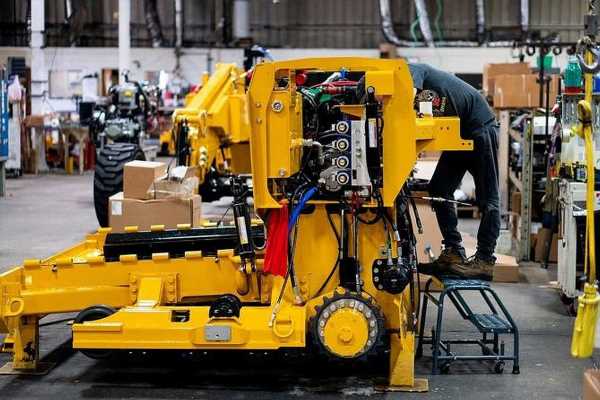Existing optimism about the capital goods sector has been enhanced by the Assembly election results, which were favourable for the BJP.
The prospects of political continuity led to renewed interest in the sector.
There are demand-supply gaps, especially in power, and visibility of improved pricing and strong order flows, including from private enterprises.
Commodity prices are still moderate due to slower global demand.
The Q2FY24 results beat Street estimates.
Transmission & distribution (T&D) equipment saw a demand bounce, and L&T reported big orders in overseas hydrocarbon projects in West Asia.
Earnings and revenue visibility is good until FY26 at least, given that most players have order backlogs of twice their estimated FY24 revenues.
There were revenue upgrades for ABB, Thermax and Cummins.
L&T’s H1FY24 order book also looked strong.
There’s been a bullish movement in the sector for a while.
So, valuations could look stretched.
A quick look at some listed companies in the space follows.
L&T is seeing capex recovery, driving both domestic and overseas orders.
Domestic capex is policy-led and spread across water, urban infrastructure, T&D, railways, defence, and renewable energy.
The overseas portfolio is in sectors like hydrocarbons, T&D and urban infrastructure. Some private sector interest is also there.
L&T should see acceleration of order inflows with revenue likely to double over next 4-5 years.
The net profit could double in three years with a likely annual growth of over 20 per cent.
The monetisation of assets like Nabha Power and potential divestment or stake sales in Hyderabad Metro will free up more capital and reduce net working capital requirements and boost return on equity.
ABB is seeing opportunities in data centres and T&D, electric vehicles, railways, and PLI-led capex, which is generating revenues for its industrial automation and robotics verticals.
ABB’s revenue could also grow at 20 per cent year-on-year (Y-o-Y) until FY26 with earnings before interest, taxes, depreciation and ammorisation (EBITDA) and profit after tax (PAT) growth at near 30 per cent.
The company is looking at penetration into Tier-IV/V cities.
It’s also looking at overseas opportunities, encouraged by its parent.
It has a strong balance sheet to take care of capex without stress.
Thermax is likely to be a beneficiary of the energy transition story and it is expanding across biomass, waste to energy, solar and chemicals.
It has technology tie-ups for hydrogen energy and is looking to supply equipment for ultra-pure water for semiconductor manufacturing.
Healthy double-digit growth can be expected.
Its current order book is Rs 10,300 crore and is dominated by green orders.
Thermax has been continuously investing in research and development (R&D) with key partnerships with many overseas companies to build capability in boilers, electrostatic precipitators, regenerative air gas heaters, and pulse jet bag filters.
The tie-ups are also in new areas like gas de-sulphurisation technology, low-cost flexible solar films, solid waste to energy, artificial intelligence (AI) solutions to decarbonise manufacturing plants and bio-CNG projects.
It is also looking at green hydrogen and electrolyser manufacturing.
Cummins is another company that should benefit from the private sector power demand in areas like data centres and it has a premium branding and good market share in this area.
The risks broadly include slowdowns in order flows, spikes in commodity prices, and above all, high valuations.
In that sense, the sector is politically vulnerable since any setback to the current political narrative may lead to sentiment reversal.
Disclaimer: This article is meant for information purposes only. This article and information do not constitute a distribution, an endorsement, an investment advice, an offer to buy or sell or the solicitation of an offer to buy or sell any securities/schemes or any other financial products/investment products mentioned in this article to influence the opinion or behaviour of the investors/recipients.
Any use of the information/any investment and investment related decisions of the investors/recipients are at their sole discretion and risk. Any advice herein is made on a general basis and does not take into account the specific investment objectives of the specific person or group of persons. Opinions expressed herein are subject to change without notice.
Source: Read Full Article


